Avebury Part 4/6 - The Site, other details.
Here are the details of the entire Avebury Site.
Some generalities.
The Avebury Stone Circle and the Avebury Site are located about 40 km north of Stonehenge.
Only the car park has to be paid for. Access is free.
The entire site is extensive and it is difficult to get a global picture of it. However, you will appreciate this place, because it has a charm that Stonehenge no longer has (although the site in Avebury is also very popular in high season).
Broadly speaking, there are 3 sources of information:
- John Aubrey spoke in 1648 about Avebury in terms of a cathedral and about Stonehenge in terms of parish church. He discovered the monument during a fox hunt and was commissioned by his King Charles II to study it. In September 1663 he gave an initial scientific description. He gathered information about the stones, much of which would disappear in puritanical England.
- In the following century it was William Stukeley, also an ancient and spiritual science student, who discovered that the complex with the access roads had been constructed in the form of a snake. In many cultures, this is the symbol of spiritual energy. To him, Avebury was a temple to the druids. He wrote an extensive work about it but had to experience during his lifetime that several stones were destroyed.
- At the beginning of the 20th century it was mainly Alexander Keiller who was the first to do real archaeological research. He tried to save what was salvageable and before that he bought up the whole site. The local Alexander Keiller Museum in the former abbey gives an interesting overview (a model) of all the prehistoric monuments in the area.
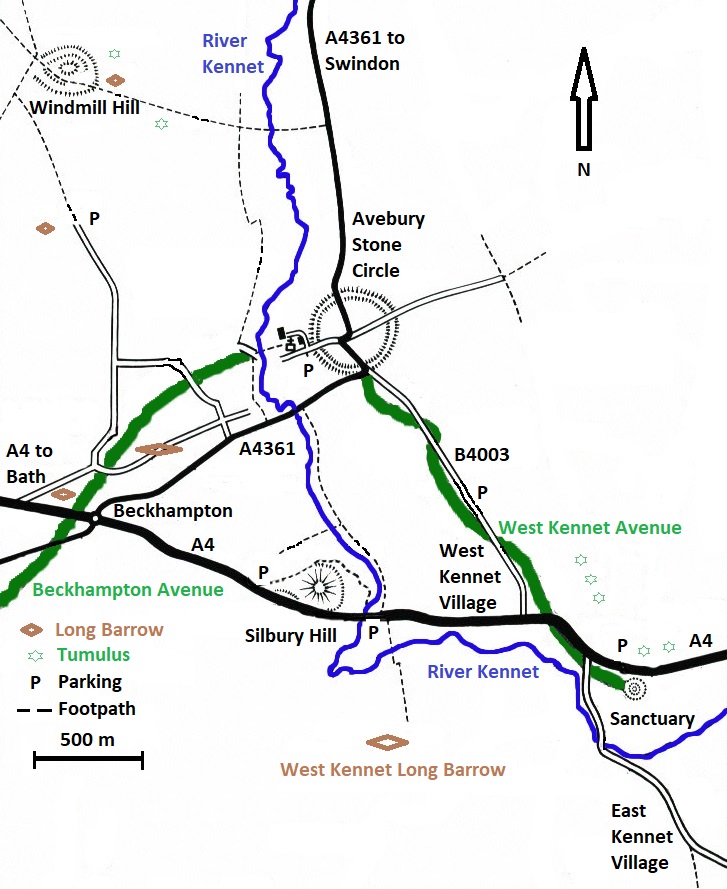
An edited plan of http://www.avebury-web.co.uk/
Overall picture.
The entire site is much larger than the large circle and consisted of about 600 megaliths. More than half have since disappeared (because the villagers used the stones as building material in the 18th century) and another half of them are upright (possibly in the right place). The entire site includes:
- The large circle with ditch and earthen shore – The Avebury Stone Circle.
- Two access roads – The West Kennet Avenue and the Beckhampton Avenue.
- An away place – The Sanctuary.
- A limestone hill – The Silbury Hill.
- A cemetery – The West Kennet Long Barrow.
- A settlement – The Windmill Hill.
The Avebury Stone Circle.
For this I like to refer to part 3 of my blog: The Avebury Stone Circle, many details.
The West Kennet Avenue and the Beckhampton Avenue.
There is a first access road and it starts at the southern passage of the circle. This winding avenue leads about 2.5 km to the Sanctuary just east of the village of West Kennet. This is the so-called West Kennet Avenue. The avenue is considered a processional road:
- Over the entire length there was a double row of upright stones, for this one used slightly smaller stones than those of the circle itself. They stood in pairs, 100 in total and every 25 m. Between each pair the avenue was 15 m wide. Each pair had two shapes:
- Narrow, round and larger as a symbol of masculinity.
- Wide, triangular and smaller as a symbol of femininity.
- It must be said that these stones too soon became victims of the advancing civilization. Farmers have been ploughing the ground around here for centuries and they didn’t see the point of these stones. Driving inside on the B4003 we get a view of some of these paired stones. Over a length of about 300 m. 27 stones were upright during the restoration and 37 others were marked with a concrete stump. So it’s a glimpse of the original 200 stone arrangement.
- At the base of some stones, Alexander Keiller found four shallow burials in 1930. Six individuals could be located and the pottery referred to the bell cup people. They may have belonged to the elite.
There is a second access road, also a processional road and which begins at the western passage of the circle. This avenue leads about 1 km to the west to a Long Barrow. This is the so-called Beckhampton Avenue:
- Excavations in 2000 showed that a pattern of paired stones was also present here along the entire length. But this avenue has been saved much worse by its fate and barely 100 m has been partially resurrected.
- The fact that this road led to a cemetery and that there were also burials along the avenue, helped in the decision to classify Avebury as a ritual place of death, life and fertility.
- And it could possibly be extended to other Barrows.
The Sanctuary.
In a first version in 3000 BC, wooden poles would have been laid in several wreaths. The smallest circle of almost 5 m wide was probably a covered place, a hut for a master/priest.
In a later phase around 2800 BC, the sanctuary consisted of two concentric circles of stones:
- The outer one had a center line of about 40 m and was connected to the Stone Circle via West Kennet Avenue.
- The interior was about 15 m wide and circled the small central covered building where possibly still a wise man lived. Another 100 years later, that central house was expanded and at least partially erected in stone.
All the stones of the sanctuary were knocked down and smashed by one farmer with whom the bucket had apparently overflowed in the mid-18th century.
Archaeologists have marked the perimeter of the shrine with small flat stones. In the soil itself many traces of human activity have been found (bell cup pottery, food scraps and bones). The sanctuary can be seen from the road.
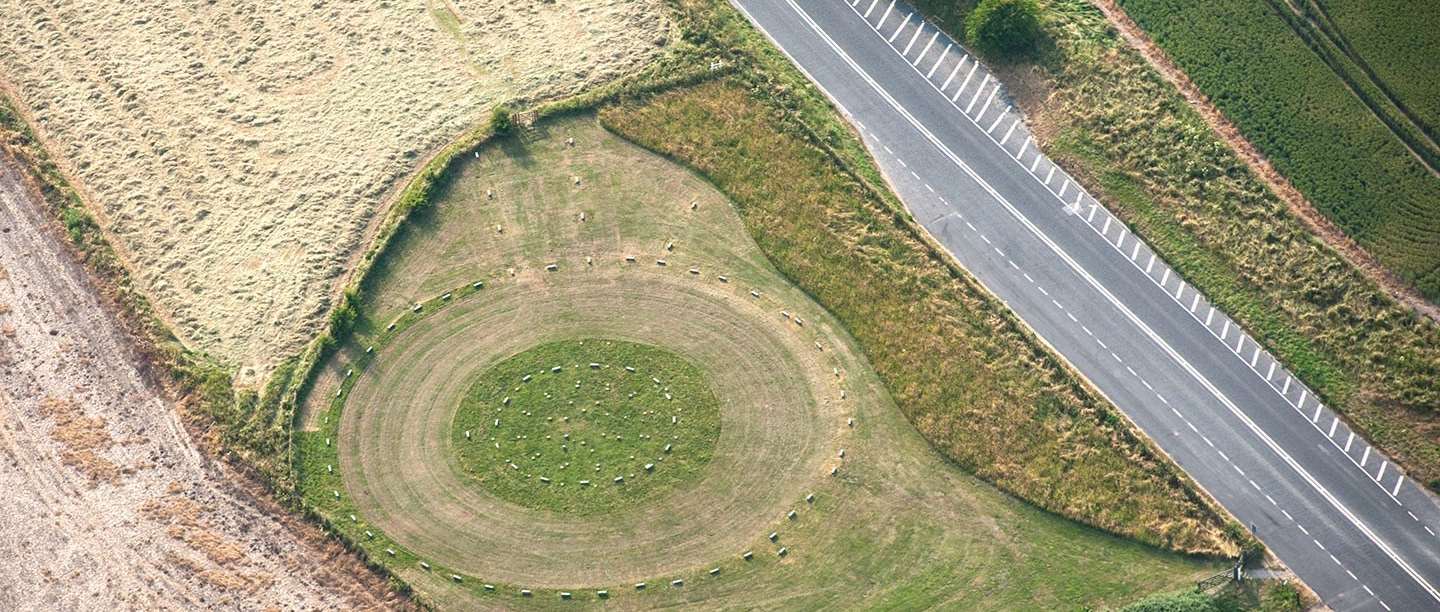
This photo can be seen on the English Heritage website. The successive circles of the sanctuary can be clearly seen from the road.
The Silbury Hill.
This eye-catcher deserves a separate story. You can read it in part 5 of this blog: The Silbury Hill, a separate story.
The West Kennet Long Barrow.
One kilometre further south is West Kennet Long Barrow. Such a Long Barrow is an older and elongated burial mound, 100 m long and 20 m wide. This is therefore a real and exceptionally large burial mound that was put into use around 3700 BC. The people had put a lot of effort into agriculture and they had settled in the area. The tomb may have served for 1,000 years:
- In front of the entrance there is a small open space where people probably gathered, before the burial took place.
- The narrow entrance is marked by 3 huge megaliths. The transport and creation of these stones certainly posed enormous problems to the people of the day. For some, it’s kind of an exercise for what was to come in Avebury and Stonehenge.
- Inside, 5 stone rooms were furnished, accessible via a corridor. Afterwards, everything was covered with tons of sand and the hill was sealed and abandoned.
Lucrative and minor grave violations probably happened during the Roman period. Multiple coins found prove this. Real archaeological research and therefore excavations date back to the mid-19th century and the mid-20th century.
Traces of at least 40 different individuals were found in those chambers. It’s possible that each room represented some kind of social status. Everything is emptied and one can take a look inside freely.
The Barrow exhibits an east-west orientation and the connection with the sunrise/sunset can be made.
There is a crop circle around here from time to time. The creators are well known and come out for it.
The Windmill Hill.
Two kilometres north is Windmill Hill. It is a fairly extensive settlement on a hill, cordoned off by 3 circular canals and earthen ramparts.
At the end of the 19th century there were plans to set up a cell tower here. Alexander Keiller prevented that. He saw the archaeological value and bought up the area. He excavated it until 1925 and gave name and meaning to this site after which the Neolithic Windmill Hill culture is named. This Neolithic man was a farmer:
- He grew wheat and barley.
- He bred cattle, sheep, pigs and goats.
- He made flint bees, arrowheads and scrapers.
- He buried the dead.
The occupation can be situated between 3700 and 2500 BC, possibly a little longer. A lot of bell cup pottery was found here, typical of windmill hill culture:
- Probably the pottery dates from the last period around 2500 BC, around that time the so-called bell cup people from the mainland arrived in this area.
- These people and their descendants are building the circle and will finish Stonehenge a few centuries later.
At the same time as this settlement, construction and commissioning of the so-called West Kennet Long Barrow began.
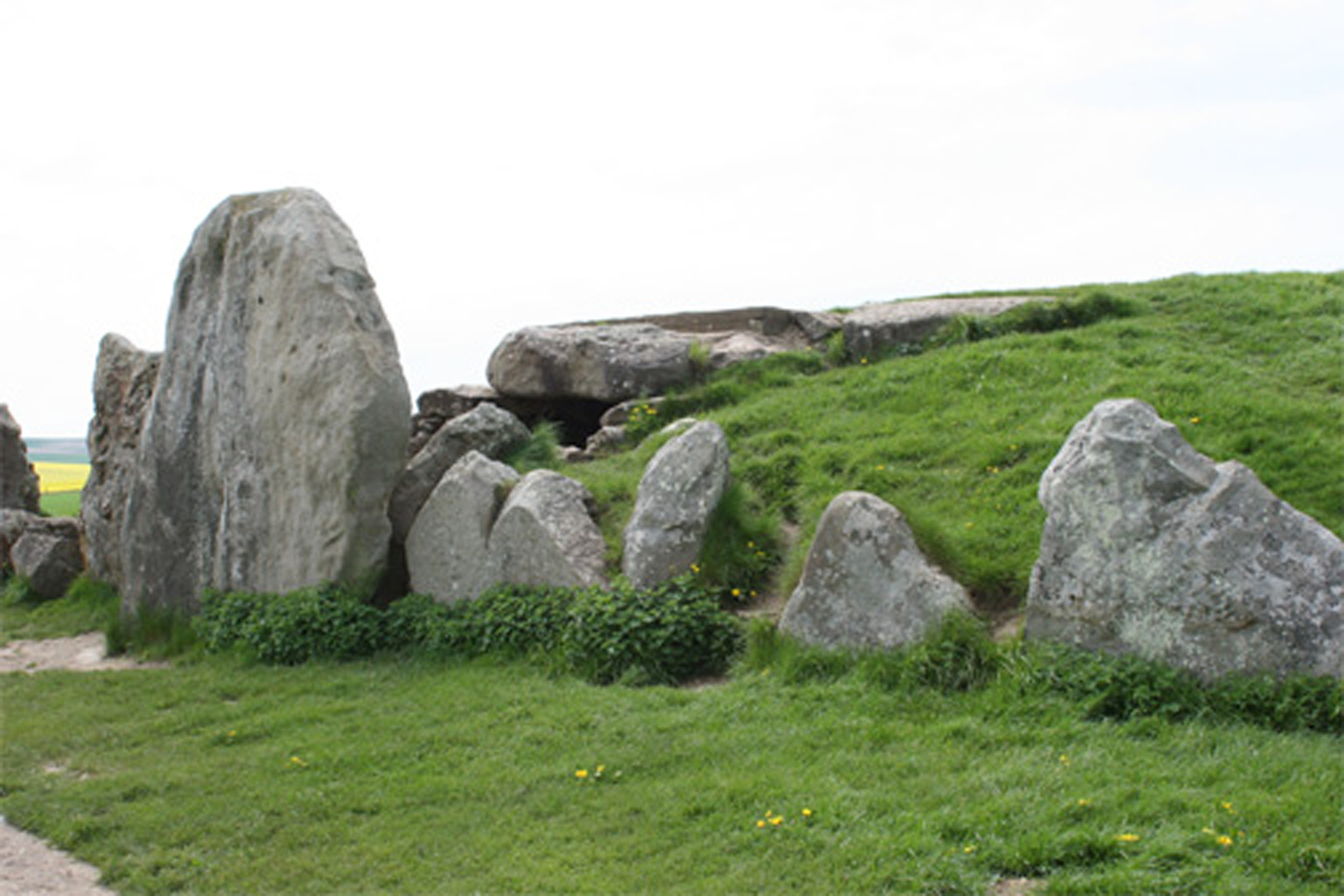

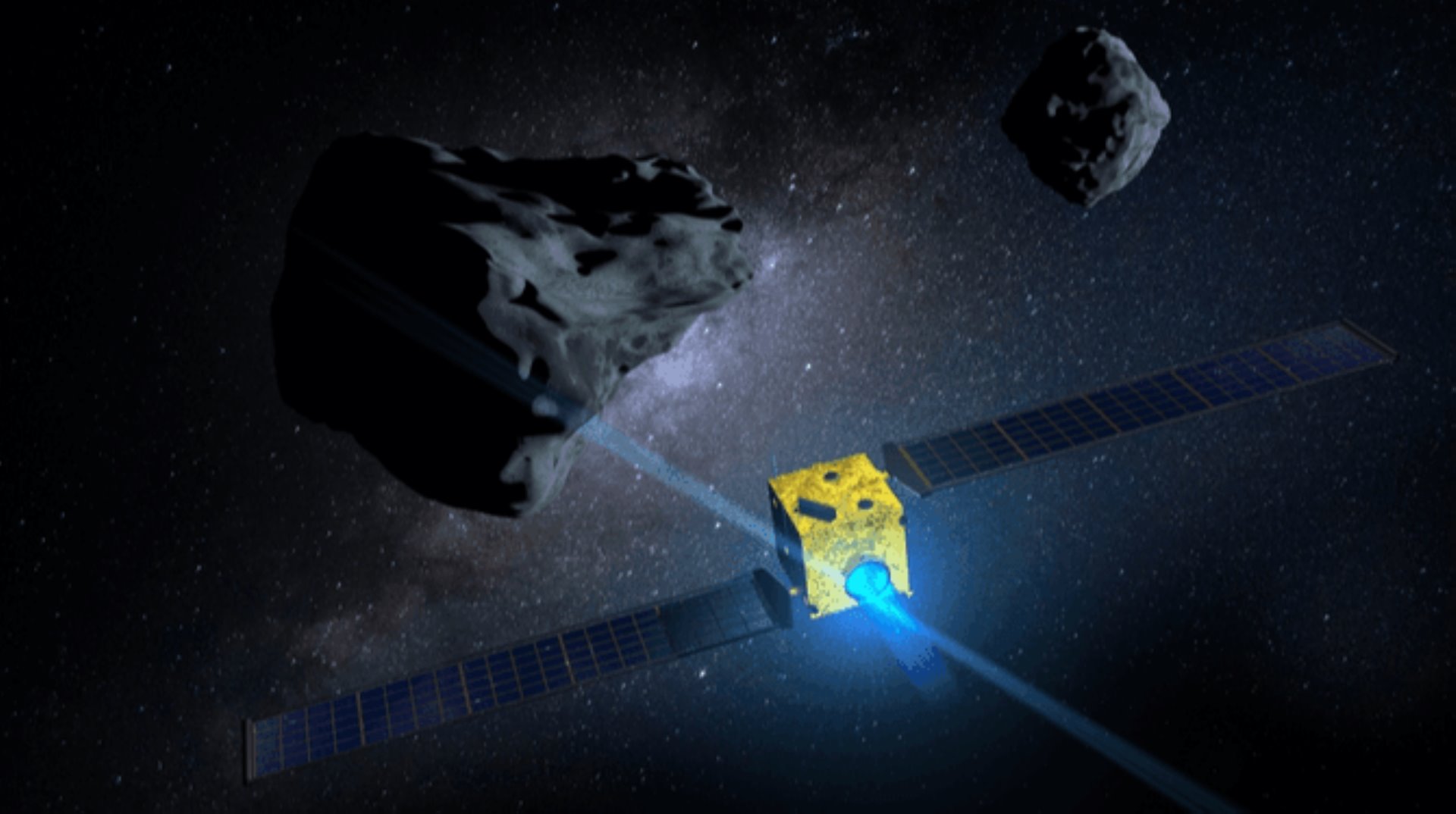

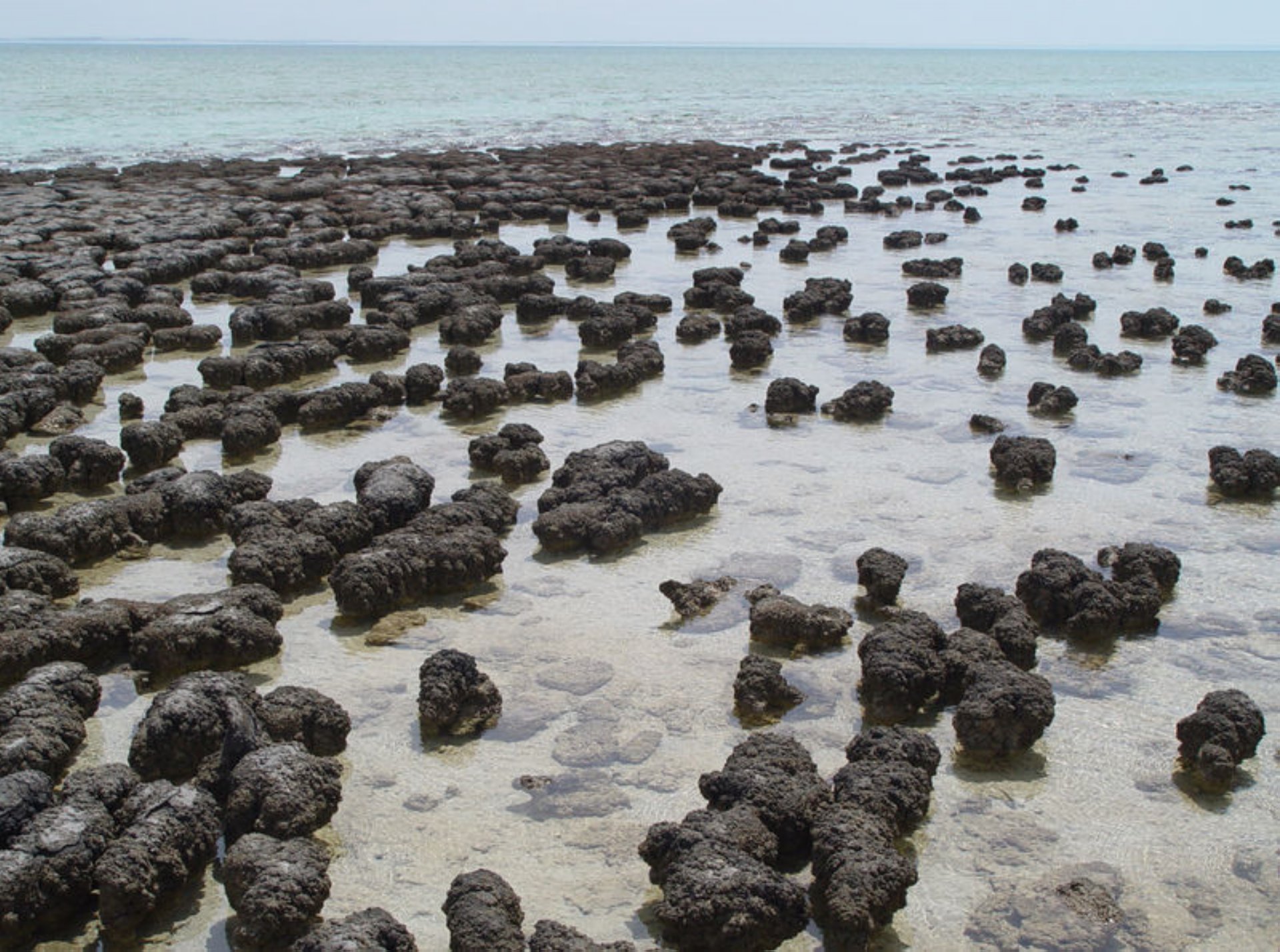

Comments